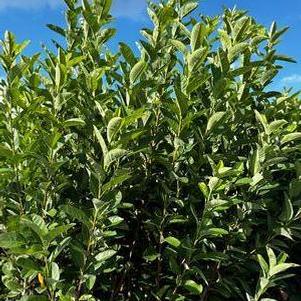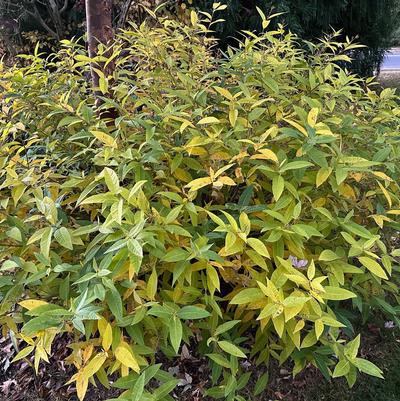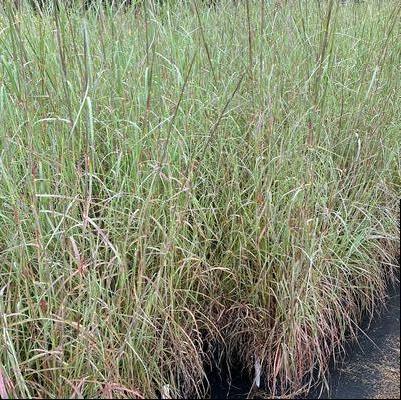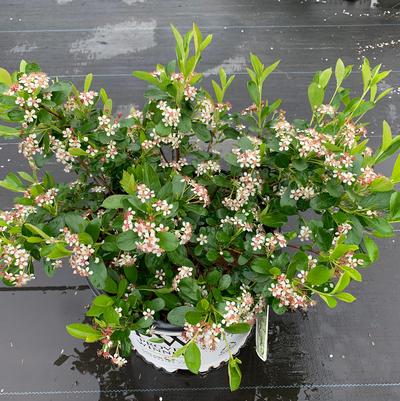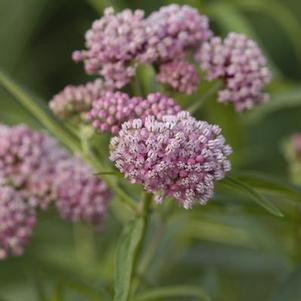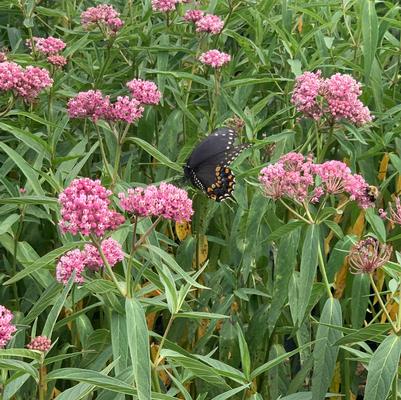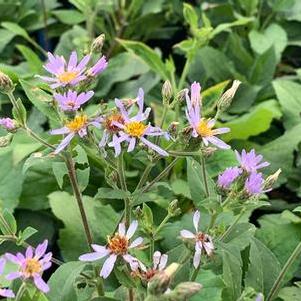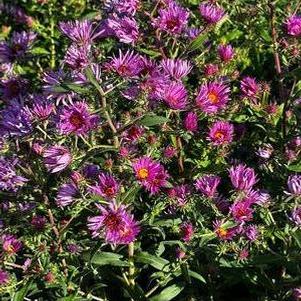Clay Soil Tolerant Plants
Success! The following plants match your search request. We've included all matches below. Click on any plant to learn additional details.
Acer griseum
Few trees are as showy as the Paperbark Maple, with its cinnamon colored exfoliating bark. The fine-textured leaves have 3 leaflets and change from dark green with silvery undersides in summer to shades of red and bronze in fall. Acer griseum makes a neat oval-shaped small tree which fits into both small and large scale landscapes well.
H: 30 Feet · S: 20 Feet · Zone: 5
Alchemilla mollis 'Thriller'
'Thriller' Lady's Mantle blooms in May and June, producing airy delicate chartreuse yellow flowers held above fuzzy bluish green leaves. 'Thriller' has somewhat larger pleated leaves than the species, and like all Alchemilla mollis, the hairy leaves repel rain water so that the foliage has attractive silver water drops on if after a gentle rain. 'Thriller' performs best in shady, moist conditions.
H: 18 Inches · S: 24 Inches · Zone: 3
Amelanchier canadensis Rainbow Pillar® PP9092
Tall, upright deciduous shrub or small tree with fragrant white flowers from April to May, followed by blackish purple fruits in June. Low maintenance and highly adaptable to various soil conditions.
H: 18 Feet · S: 8 Feet · Zone: 4
Amelanchier laevis
Amelanchier laevis has white flowers in early April. The reddish purple fruit of Allegheny Serviceberry is loved by birds. Good reddish orange fall color of Amelanchier laevis makes it a wonderful landscape choice to provide interest for each season. A wet site tolerant plant.
H: 25 Feet · S: 15 Feet · Zone: 4
Amelanchier x grandiflora Autumn Brilliance® PP5717
Small white flowers of Amelanchier x grandiflora Autumn Brilliance® emerge from pink buds in April. Apple Serviceberry has berries in June that will turn magenta to purple. Its brilliant red foliage brightens up the landscape in fall. A wet site tolerant plant introduced by nurseryman Bill Wandell of Illinois.
H: 20 Feet · S: 15 Feet · Zone: 4
Amsonia tabernaemontana var. salicifolia
Native herbaceous perennial with multiple seasons of interest, from its icy blue star-shaped flowers in May-June, to its lemony yellow fall color that covers its entire, shrub-like form. Flowers are attractive to pollinators. Foliage and stems are resistant to deer and rabbits. Tolerant of many different site and cultural conditions.
H: 30 Inches · S: 30 Inches · Zone: 3
Andropogon gerardii 'Blackhawks' PP27949
Reddish turkey foot inflorescences in August turn to silvery seedheads in fall. Foliage takes on deep purple hues in August and September. Important food source for song birds in fall and winter.
H: 60 Inches · S: 24 Inches · Zone: 4
Andropogon gerardii 'Red October' PP26283
'Red October' Big Bluestem is an exciting color breakthrough for this tough native grass. The leaves are tipped with burgundy and held on tall upright green stems in summer. The fall the foliage turns a bright scarlet red for several weeks after the first frost. 'Red October' also has red turkey-foot-shaped seed, particularly showy when backlit. The sturdy upright stems are an attractive tan in winter. An important food source for winter birds. Introduced by Intrinsic Perennials.
H: 60 Inches · S: 24 Inches · Zone: 3
Andropogon ternarius
Native warm-season grass that is great for adding height to a variety of landscapes. Attractive late season color. Tolerant of part shade, drought, coastal conditions.
H: 36 Inches · S: 18 Inches · Zone: 6
Anemone canadensis
A lovely North American native perennial known for producing a prolific bloom of bright white, five-petaled flowers with golden yellow stamens from April to June, often reblooming sporadically throughout the summer. Attractive basal clumps of deeply lobed, medium green foliage can spread rapidly by rhizome in the landscape. Tolerant of partial shade and resistant to deer.
H: 14 Inches · S: 24 Inches · Zone: 3
Aronia melanocarpa Ground Hug® PP31821
Clusters of white flowers over green leaves in May. Black edible fruit followed by red and orange fall color. Dense groundcover.
H: 1 Feet · S: 3 Feet · Zone: 3
Aronia melanocarpa Low Scape Mound® PP28789
Low Scape Mound® Black Chokeberry ('UCONNAM165') is an unusual Aronia melanocarpa form produced by Drs. Mark Brand and Bryan Connolly of U. Conn. Low Scape Mound® performs as a groundcover instead of an upright shrub, so it works well as an erosion control plant as well as an edger. The green spring foliage is topped by lots of attractive white racemes. The showy flowers are followed by shiny black fruit in late summer, providing important food for wildlife. The fall color is a deep red, persisting for several weeks.
H: 2 Feet · S: 2 Feet · Zone: 3
Aronia melanocarpa Low Scape Snowfire® PP34116
A small, deciduous shrub with profuse fragrant blooms from April to May followed by equally abundant amounts of edible black fruits from July to September. Bright red and orange fall color makes a splash in the landscape. Salt and drought tolerant.
H: 4 Feet · S: 4 Feet · Zone: 3
Aronia melanocarpa 'Viking'
'Viking' Black Chokeberry has glossy dark green leaves which turn a striking red in fall. The white, spring flowers are followed by large purplish black fruit, which birds love (and they are full of anti-oxidants). The site adaptability (Aronia melanocarpa 'Viking' likes both wet and dry conditions) and the suckering habit make it an excellent shrub for reclamation use, as well as an attractive landscape plant. Dr. Mark Brand of Connecticut found this native beauty.
H: 6 Feet · S: 6 Feet · Zone: 4
Asclepias incarnata
Swamp Milkweed is a great addition to wet site gardens, with fragrant white-to-pink milkweed flowers appearing in July and August. The flat cymes are followed by interesting seed pods. Asclepias incarnata is an important Monarch butterfly food source, and it tolerates dry sites as well as wet conditions.
H: 36 Inches · S: 24 Inches · Zone: 3
Asclepias incarnata 'Cinderella'
Bright pink cymes on tall stalks of green leaves appear in July and August. Fragrant, wet site tolerant and deer resistant.
H: 40 Inches · S: 24 Inches · Zone: 3
Asclepias incarnata 'Ice Ballet'
White flat flower clumps are held above green lance shaped leaves in July and August. Wet site tolerant and an important food source for Monarch butterfly larvae.
H: 36 Inches · S: 24 Inches · Zone: 3
Asclepias incarnata 'Soulmate'
Fragrant mauve pink flower clumps on tall stems of narrow green leaves, blooms in July and August. Wet site tolerant and attracts numerous pollinators.
H: 42 Inches · S: 24 Inches · Zone: 3
Aster ericoides 'Snow Flurry'
Small white daisy-like flowers cover short green leaves and stems in late summer and early fall. Forms a dense green mat which makes a good native groundcover.
H: 8 Inches · S: 24 Inches · Zone: 4
Aster lateriflorus 'Lady in Black'
'Lady in Black' Calico Aster is an unusual native Aster because the foliage is just as showy as the flower display. The narrow leaves start the summer as a deep plum or purple, gradually changing to bronze when 'Lady in Black' blooms in late summer and early fall. It becomes covered with delicate white daisies with rosy pink centers, complimenting the dark foliage and attracting all types of butterflies and other pollinators. The open habit can be impproved by cutting plants back to 6" in June. This native selection was found in Holland. (New name is Smyphyotrichum lateriflorum.)
H: 30 Inches · S: 36 Inches · Zone: 3
Aster macrophyllus 'Twilight'
A rosette of large heart shaped foliage is covered in late summer and early fall with lavender blue flowers.
H: 30 Inches · S: 30 Inches · Zone: 3




